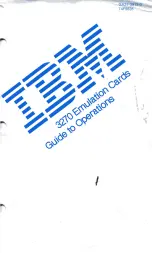
AR-B1380/AR-B1380A User’ s Guide
Page 23
(1) CN7: 40-Pin PC/104 Connector Bus C & D
Figure 3-7 CN7: 40-Pin PC/104 Connector Bus C & D
(2) CN8: 64-Pin PC/104 Connector Bus A & B
Figure 3-8 CN8: 64 Pin PC/104 Connector Bus A & B
(3) PC/104 Channel Signal Description
Name
Description
BUSCLK
[Output]
The BUSCLK signal of the I/O channel is asynchronous to
the CPU clock.
RSTDRV
[Output]
This signal goes high during power-up, low line-voltage or
hardware reset
SA0 - SA19
[Input / Output]
The System Address lines run from bit 0 to 19. They are
latched onto the falling edge of "BALE"
LA17 - LA23
[Input/Output]
The Unlatched Address line run from bit 17 to 23
SD0 - SD15
[Input/Output]
System Data bit 0 to 15
BALE
[Output]
The Buffered Address Latch Enable is used to latch SA0 -
SA19 onto the falling edge. This signal is forced high
during DMA cycles
-IOCHCK
[Input]
The I/O Channel Check is an active low signal which
indicates that a parity error exist on the I/O board
IOCHRDY
[Input, Open collector]
This signal lengthens the I/O, or memory read/write cycle,
and should be held low with a valid address
IRQ 3-7, 9-12, 14, 15
[Input]
The Interrupt Request signal indicates I/O service request
attention. They are prioritized in the following sequence :
(Highest) IRQ 9, 10, 11, 12, 13, 15, 3, 4, 5, 6, 7 (Lowest)
-IOR
[Input/Output]
The I/O Read signal is an active low signal which instructs
the I/O device to drive its data onto the data bus
-IOW
[Input/Output]
The I/O write signal is an active low signal which instructs
the I/O device to read data from the data bus
-SMEMR
[Output]
The System Memory Read is low while any of the low 1
mega bytes of memory are being used
-MEMR
[Input/Output]
The Memory Read signal is low while any memory location
is being read
Summary of Contents for AR-B1380
Page 2: ......
















































